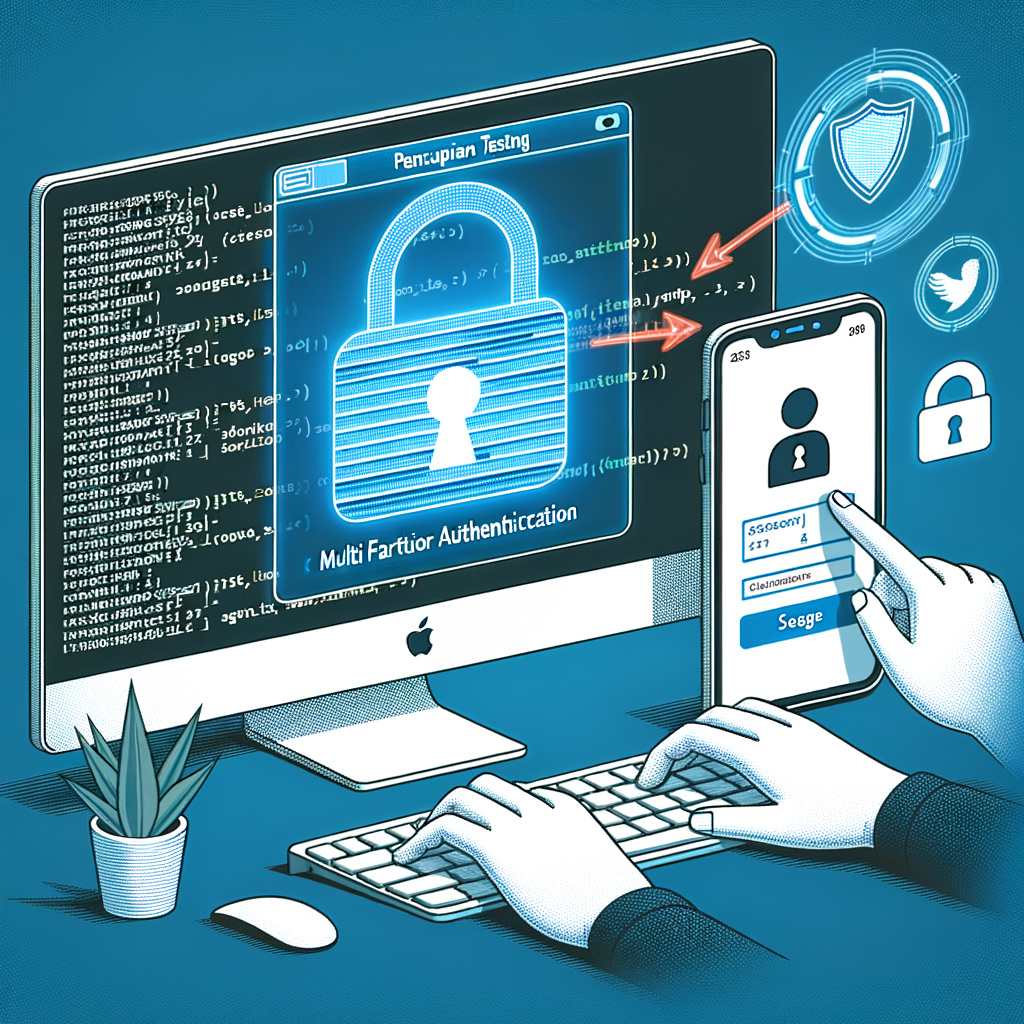 Piergiorgio Venuti
Piergiorgio Venuti
Penetration Testing and MFA: A Dual Strategy to Maximize Security
Estimated reading time: 3 minutes
In a digital world where cyber threats are increasingly sophisticated, multi-factor authentication (MFA) represents a crucial defense against unauthorized access. However, the growing prevalence of phishing attacks aimed at bypassing MFA raises significant questions about post-authentication security and the overall effectiveness of security strategies. In this context, we examine how penetration testing can be used to assess and strengthen the security of web applications, considering both post-authentication security and user awareness of phishing attacks.
What is Multi-Factor Authentication (MFA)?
MFA is a security methodology that requires more than one proof of identity to verify access to a system. These factors can include something the user knows (like a password), something the user has (like a hardware token or code-generating app), or something inherent to the user (like a fingerprint).
Benefits of MFA
Enhanced Security
With MFA, the difficulty for an attacker to gain unauthorized access increases significantly, protecting against brute force attacks, credential stuffing, and other methods of credential theft.
Compliance and Risk Reduction
Using MFA helps organizations comply with data security and privacy regulations, reducing the risk of breaches and the consequent penalties.
Vulnerabilities Related to MFA
Advanced Phishing Attacks
Despite its advantages, MFA is not infallible. Phishing attacks, especially those that use decoy pages to capture not only basic credentials but also temporary MFA tokens, can still compromise security.
Implementation and Management Issues
The complexity of implementing and managing MFA can also introduce vulnerabilities, especially if not managed properly.
Types of MFA and Security Considerations
Hardware Tokens
Pros: High security, hard to clone.
Cons: Expensive, risk of loss or theft.
Software Authenticators
Pros: Easy to implement, accessible.
Cons: Vulnerable if the hosting device is compromised.
Biometrics
Pros: Hard to replicate, quick for the user.
Cons: Privacy issues, high implementation costs.
The Importance of Penetration Testing with MFA
Testing Post-Authentication Security
Providing the MFA token to the penetration tester allows examining the security of the application once authentication is bypassed. This can reveal vulnerabilities that could be exploited by an attacker after gaining access.
Assessing the Effect of Phishing Attacks
Conducting a separate ethical phishing test can evaluate how effectively MFA protects users and what additional measures might be necessary to prevent compromises through sophisticated phishing attacks.
Optimal Penetration Testing Strategies
Defining Objectives
Determine whether the focus is on testing defenses against unauthorized access, internal robustness post-authentication, or both.
Choosing the Type of Test
Decide between a black box, white box, or grey box approach depending on pre-existing system knowledge and specific objectives.
Using Advanced and Current Tools
Use penetration testing tools that simulate the latest and most advanced attacks, including those targeting MFA.
Documentation and Reflection
Accurately documenting findings, analyzing vulnerabilities, and providing detailed recommendations are essential for improving overall security.
Conclusions
Adopting MFA is a fundamental step towards information security, but it is not a universal solution. Implementing thorough penetration testing, both post-authentication and through ethical phishing, is crucial for identifying and mitigating potential vulnerabilities that could be exploited despite MFA. By doing so, organizations can ensure not only the robustness of their authentication measures but also the awareness and preparedness of their users against sophisticated attacks.
Useful links:
Customers
Twitter FEED
Recent activity
-
SecureOnlineDesktop
Estimated reading time: 6 minutes L'impatto crescente delle minacce informatiche, su sistemi operativi privati op… https://t.co/FimxTS4o9G
-
SecureOnlineDesktop
Estimated reading time: 6 minutes The growing impact of cyber threats, on private or corporate operating systems… https://t.co/y6G6RYA9n1
-
SecureOnlineDesktop
Tempo di lettura stimato: 6 minuti Today we are talking about the CTI update of our services. Data security is… https://t.co/YAZkn7iFqa
-
SecureOnlineDesktop
Estimated reading time: 6 minutes Il tema della sicurezza delle informazioni è di grande attualità in questo peri… https://t.co/tfve5Kzr09
-
SecureOnlineDesktop
Estimated reading time: 6 minutes The issue of information security is very topical in this historical period ch… https://t.co/TP8gvdRcrF
Newsletter
{subscription_form_1}© 2024 Cyberfero s.r.l. All Rights Reserved. Sede Legale: via Statuto 3 - 42121 Reggio Emilia (RE) – PEC [email protected] Cod. fiscale e P.IVA 03058120357 – R.E.A. 356650 Informativa Privacy - Certificazioni ISO












